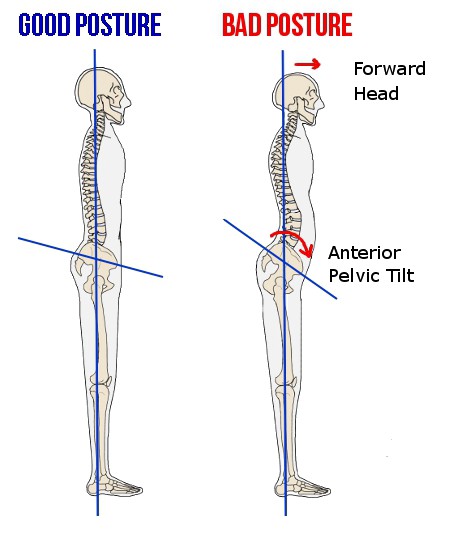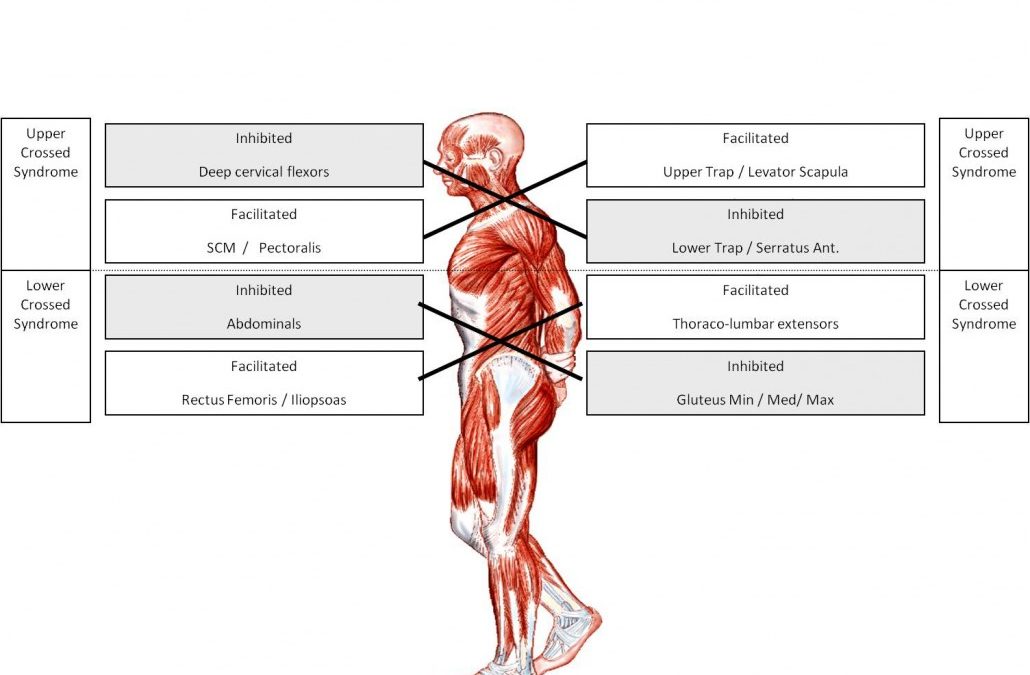Have you ever looked in the mirror and noticed one arm appears to be bigger than the other? Or perhaps you’re finding that your right hand is stronger than your left. It’s pretty common, don’t worry.
When I asses people I commonly discover that the one leg is stronger and more flexible than the other one.
Usually, the strength difference between sides is most noticeable, however, in other cases it can be the actual size that stands out.
When training people I aim to improve day to day performance as well as preventing injury with adequate methods and prevent or treat muscle imbalance.
What is muscle imbalance
Muscles are attached to either side of a joint that works against one another to control the movement of the joint. In order to function properly, it requires a balance of muscle length and strength between opposing muscles surrounding a joint.
A muscle balance is when normal amounts of opposing forces between muscles keep the bones centred in the joint during motion. When opposing muscles provide different directions of tension we have muscle imbalance – due to tightness and/or weakness.
Most people worry about muscular imbalances only from an aesthetic point of view, without keeping in mind that the strength aspect is also important because it’s going to have an impact on the body when doing daily activities.
For example, if you regularly use the muscles on one side a lot more than the other, those muscles will get stronger but also shorter and tighter. On the other side, some muscles get weaker – and longer and looser.
In this situation, the shorter muscles pull that body part out of normal alignment and your whole body will end up making adjustments to compensate that.
CAUSES
Muscle imbalance can appear from two causes – biomechanical and neuromuscular.
Biomechanical causes include the entire sum of factors related to body mechanics:
- participation in a particular sport where one side of the body is favoured over the other(tennis, golf etc.);
- repeated movements only in one direction(pushing/ pulling/ bending/twisting etc.) ;
- an occupational issue where you are performing one type of action over and over again;
- some daily activities (for example lifting or/and caring a bag with the dominant hand);
- bad postures sustained for long hours (ex: in front of the computer, at the office, driving etc.)
The other cause is a neuromuscular imbalance due to the predisposition of certain muscle groups to be either tight or weak because of different moving patterns.
The group of muscles that are prone to tightness are:
- neck muscles (sternocleidomastoid, upper trapezius),
- chest muscles (pectoralis major and minor),
- thoracolumbar muscles (erector-spinae),
- hip flexor muscles (iliopsoas, rectus femoris, sartorius),
- hip adductors,
- hamstrings and calf muscles.
The muscle groups prone to weakness are
- anterior neck muscles,
- upper back muscles (lower and middle trapezius, rhomboid muscles),
- abdominal muscles (transversus abdominus, rectus abdominus),
- gluteal muscles(gluteus maximus and medius, piriformis).
TYPES AND EXAMPLES
Here are some examples of muscle pairs and the movements they enable:
- Biceps and triceps help bend and straighten the elbows.
- Deltoids and latissimus dorsi lift and lower the arms.
- Abdominals and erector spinae muscles bend the spine forward and backwards.
- Quadriceps and hamstrings bend and straighten the knee.
- Hip abductors and adductors move the legs toward each other or apart.
Anterior pelvic tilt
Muscular imbalances in the hip can be attributed to two changes in muscle function:
- A tightening of the muscles that provide movement – iliopsoas and erector spinae;
- The weakening of the muscles that control movement/joint position – the gluteal muscles are the key stabiliser muscles around the hip joint.
If you spend long periods of time sitting in a chair the front of the hips (hip flexors) become short and tight, while the back of the hips (gluteal muscles) become long and weak.
Why is anterior pelvic tilt a problem? Tilting the pelvis forwards can cause excessive lordosis (or inwards curvature of the lumbar spine).
Having an excessive curve in the spine will put great strain on it, possibly leading to lower back pain or other chronic problems. To give a further example, if there is excessive lordosis, the torso will naturally lean forward in compensation.
If the torso leans forward, then the head will obviously be looking down, so the neck will need to crane up to still be looking straight forward. If the neck does this, then the muscles in the back of the neck will become overly tight in comparison to the lengthened muscles in the front of the neck.
This is just one example; a muscle imbalance in one area of the body can contribute towards imbalances in many other parts of the body. Even on a non-functional level, correcting anterior pelvic tilt makes the person look taller.

PROBLEMS
When a muscle imbalance pulls one of your joints out of position, this puts a strain on that joint. When that strain stresses the nerves around the joint, you feel pain. If your body readjusts itself to ease the pain, other sets of muscles can become imbalanced – and the cycle can continue.
We all have positions we spend a lot of time in. If one of these positions puts your spine and other joints out of their normal balanced alignment, this is a postural dysfunction – and your muscles will adapt and become unbalanced, as described above.
Postural problems can manifest in a wide range of different ways such as:
- Lower Back Pain
- Facet joint and ligament strain
- Slipped discs
- Shoulder Impingement and Rotator Cuff tendonitis
- Headaches and Neck Pain
- Trapped Nerves
- Sports Injuries
- Hamstring tears
- Anterior knee pain
TREATMENT
The simplest—perhaps too simple—way to avoid muscle imbalance is to choose exercises that strengthen opposing muscle groups, such as bench presses (for your chest) and seated rows (for your back), but muscle imbalance is a more complex problem.
The easiest way to prevent muscle imbalance is to use stretching exercises. The muscles will be strong but flexible instead of strong and stiff.
Once properly assessed, muscle imbalances and postural dysfunctions are fairly easy to correct:
- Identifying and changing the lifestyle and working factors that are contributing to the underlying problem
- Mobilising joints and releasing short, tight muscles and soft tissues
- Strengthening the longer, weaker muscles to correct the body’s alignment and movement control
CONCLUSION
Muscle imbalances can be characterized by either side-to-side (right versus left) or front-to-back (agonist versus antagonist) differences in muscle length or strength. Most musculoskeletal pain syndromes are caused by front-to-back differences, or imbalances of muscles surrounding joints, rather than side-to-side differences.
When one muscle is stronger than its opposing muscle, you have an imbalance. For instance, if you do push-ups or bench presses more than you do rows, pull-ups, or other upper body pulling movements, there’s a good chance your chest is far stronger than your back, and you likely have a strength imbalance.
Your opposing muscles and muscle groups are supposed to work together. Those muscles must be balanced in terms of strength, flexibility, and even posture to be efficient and to prevent injuries.
It’s all to do with movement. The limited range of motion can affect movement and place greater stress on the joints- this can also lead to injury.
The tightness in the muscle may inhibit the opposing muscle group through a process called reciprocal innervation.
Weakening the muscles that control movement significantly affect their endurance. This means they may not be able to function for as long a period as you want.
Finally, you will want to make sure you’re taking time to assess what caused the issue in the first place. If you don’t, it’s highly likely that it may occur again in the future at some point.
In some cases, you may not be able to change the reason (such as when it’s an occupational activity), but by understanding that it is causing a problem, you can better match your training to overcome it.
This doesn’t necessarily mean you have to always be performing single-side exercises only; it just means that you may need to perform more exercises on a regular basis for that weaker side.
Muscle imbalance is a common problem not only for all athletes in sport but also for non-athletes. This can not only have a negative effect on performance but provoke long-lasting injury.
References
- http://www.coreperformance.com/knowledge/training/muscle-imbalance.html
- http://www.muscleimbalancesyndromes.com/what-is-muscle-imbalance/
- http://www.weybridgephysio.co.uk/article/muscle-imbalance-and-postural-dysfunction
- http://www.jandaapproach.com/the-janda-approach/jandas-syndromes/

